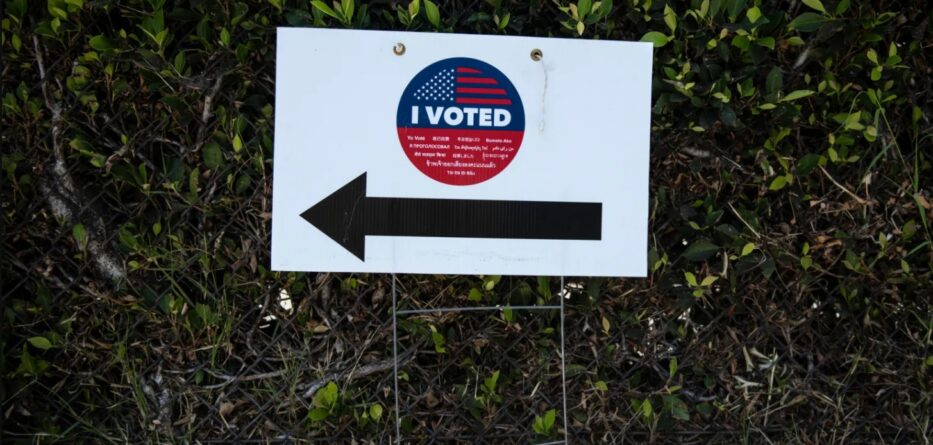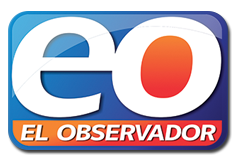Much is expected of the California voter.
In any given election year, we may be asked to dust off our labor lawyer hats, brush up on oil and gas regulations, reacquaint ourselves with decades of tax policy, or analyze infrastructure funding. We may have to weigh the moral pros and cons of capital punishment, marriage equality or pig protection and — over and over again — oversee all things dialysis clinic.
This November is no different. Voters will be asked to consider seven thorny policy proposals, from abortion to zero emission vehicles. Many more failed to qualify for the ballot, including one to raise the minimum wage to $18 an hour. That means voters will decide the fewest measures in an election year since 1916.
What are these ballot measures really about? How did they make their way onto the ballot in the first place? And how did Californians first fall in love with direct democracy?
Below, California’s passion for propositions, explained.
What’s on your November ballot?
After months of signature gathering, fundraising and legislative wrangling, we have details on the ballot measures that you can vote on this fall.
- Proposition 1: Putting abortion safeguards in the California constitution: After the news leaked in early May that the U.S. Supreme Court was planning to rule that the federal constitution doesn’t guarantee the right to an abortion — and it did reverse the five-decade-old precedent on June 24 — California’s top Democrats, vowing to “fight like hell,” proposed adding the protection to the state constitution. The proposed constitutional amendment was introduced in the Legislature in early June and was passed with the overwhelming support of both chambers by the end of the month. If approved by the voters, it would bar the state from denying or interfering with a person’s right to choose an abortion and contraceptives.
California has long been a safe haven for abortion access. In 1969 the state Supreme Court ruled that the California constitution’s right to privacy implies the right to an abortion. Reproductive access is also protected by statute. Supporters hope this amendment will reiterate that policy more explicitly and render it harder to reverse in the future, though some legal scholars say the language is still too ambiguous.
- Propositions 26 and 27: Legalizing sports gambling, two ways: After the U.S. Supreme Court struck down a federal law banning state-regulated sports betting, two big-spending interests stepped up with California legalization proposals.
Prop. 27 would allow Californians to bet on sports and other competitions online, but only through certified gaming tribes and large, well-established online betting companies. The measure, funded by industry giants FanDuel and DraftKings, would potentially direct hundreds of millions of dollars in fee revenue to housing and services for homeless Californians.
Prop. 26, supported by some of the state’s tribal governments, would only legalize sports betting in-person at tribal casinos and designated horse tracks. The measure, which would also allow tribes to offer roulette and other dice games, would raise potentially tens of millions of dollars for the state budget, most of which would be spent at the discretion of the governor and Legislature.
- Proposition 28: Set aside school funding for arts and music: Sponsored by former Los Angeles Unified School District superintendent Austin Beutner, this measure would require the state to set aside a share of its revenue — likely between $800 million to $1 billion per year — for arts and education classes. The new money would be disproportionately reserved for schools with many low-income students to hire new arts staff.
- Proposition 29: Kidney clinic rules, third time a charm? This measure slaps dialysis clinics with a host of new restrictions, including a requirement that a doctor, nurse practitioner or a physician assistant be on site during all treatment hours. Centers would also be required to get state approval before shuttering or reducing services and to publicly list any doctors who have at least a 5% ownership stake in a clinic. Sound familiar? That’s because the Service Employees International Union-United Healthcare Workers West, the union supporting this measure, has tried and failed to persuade voters to support new dialysis center regulations twice before, in 2018 and 2020, over vehement and very costly industry opposition.
- Proposition 30: Millionaires paying for electric cars: This measure would impose a new 1.75% tax on any individual’s income of more than $2 million per year to raise between $3 billion to $4.5 billion each year to fund a collection of greenhouse gas reducing initiatives. Most of the money would go toward new incentives for Californians to buy zero-emission vehicles and to build new electric charging or hydrogen fueling stations. (Lyft, which is required to move toward ZEVs, is a major funder). A quarter of the new money would go toward wildfire fighting and prevention efforts.
- Proposition 31: Reconsidering a flavored tobacco ban: In 2020, Gov. Gavin Newsom signed a bill banning the sale of all flavored tobacco products, whether smoked, chewed or vaped. The tobacco industry gathered enough signatures to ask voters to overturn the law with this referendum. (A reminder: Voting “yes” is to keep the law; voting “no” is to get rid of it.)
By 2014, California voters were sick of ballots larded up with too many measures, many of them highly technical, specific to one industry or difficult to understand.
So state lawmakers changed the rules. While initiatives can only go before voters in November, a tweak to the election code gave the Legislature more time to hold public hearings on those upcoming measures, while giving initiative backers the chance to revise or remove initiatives later in the process. The goal was a more deliberative, thoughtful process with more room for compromise.
But one person’s “compromise” is another person’s “legal extortion.”
Since 2016, initiative sponsors have pulled five partially-qualified measures from the ballot, but only in exchange for concessions from the Legislature. The most notorious example came in 2018 when the soda industry funded a ballot measure that would have made it much more difficult for local governments to raise taxes. They pulled from the initiative — which then-Gov. Jerry Brown called an “abomination” — after lawmakers agreed to ban new local soda taxes for the next 13 years. Critics at the time equated the strategy with nuclear brinksmanship and hostage taking, but most Democrats in the Legislature, however irate, weren’t willing to risk sending the tax-capping proposition to the voters.
This year, two off-ballot compromises were struck. Attorneys and consumer groups agreed to withdraw a measure that would have raised the cap on how much patients can sue for medical malpractice in exchange for a lower increase. And the former CEO of recycling company Recology and some environmentalists decided just before the June 30 deadline to pull a measure to phase out the use of non-recyclable plastic in exchange for an alternative bill.
So that’s two fewer measures for you this November.
California is one of 24 states with an initiative process.
While the state has had some way for citizens to initiate laws since 1898, it formally adopted the ballot initiative process after a special election on Oct. 10, 1911, when then-Gov. Hiram Johnson signed into law the ability for voters to recall elected officials, repeal laws by referendum and to enact state laws by initiative.
The push for more direct democracy was a part of a movement across the U.S. in the late 1800s for social and political reform. In California, it was fueled by concerns over the influence that Southern Pacific Railroad and other “monied” interests had over the Legislature.
From 1911 through the most recent ballot measures in November 2020, there have been 2,068 initiatives cleared for signature collection. Of those, 392, or about 19%, qualified for the ballot. And of those that made the ballot, 137, or 35%, have been approved by voters, including 39 constitutional amendments.
The most measures on a single ballot? 48 in 1914, followed by 45 in 1990 and 41 in 1988.
What’s the difference between a referendum and an initiative?
A referendum allows voters to approve or reject a statute passed by the Legislature, but with some exceptions: “urgency” statutes necessary for public peace, health, or safety; statutes calling elections; or laws that levy taxes or provide appropriations for current expenses.
Initiatives, which are more common than referenda, propose new statutes, as well as amendments to California’s constitution. Since 2011, initiatives can only appear on the November general election ballot.
In most cases, initiatives and referenda share the same signature requirements — at least 5% of the total votes cast for the office of governor at the last election. A constitutional amendment initiative, however, requires at least 8% of the total votes cast at the most recent gubernatorial election.
Currently, that’s a minimum of 623,212 signatures for an initiative on a statute, and 997,139 for an initiative to change the constitution.
The long and winding road to the ballot
What can be an initiative? Anything that’s the “proper subject of legislation” – as long as it only addresses one subject.
To get an initiative or referendum on the ballot, there are a few steps that can begin more than a year before the election.
- An idea is proposed by citizens to the state attorney general’s office with a $2,000 fee, or a bill is passed by the Legislature.
- A title and summary are written by the attorney general.
In California, unlike in some other states, the ballot title and summary are not drafted by the secretary of state or an election board. The language is meant to be neutral, but former attorneys general Xavier Becerra and Kamala Harris were accused sometimes of not staying impartial.
For example, in 2020, Becerra described Proposition 6, a measure that would have repealed a $5 billion a year package of taxes and fees on motorists, as: “Eliminates certain road repair and transportation funding. Requires certain fuel taxes and vehicle fees to be approved by the electorate.”
After a lawsuit, a judge ordered the first part of the sentence to be rewritten, but that was overturned by a state appeals court, which ruled that the attorney general has “considerable latitude” in drafting the title. (A proposed initiative to transfer the drafting authority to the nonpartisan Legislative Analyst’s Office failed to qualify for the November ballot.)
- Signatures are gathered.
The number of signatures required is based on a percentage of total votes in the last gubernatorial election.
- Lawmakers are alerted, after which they may hold public hearings.
The Legislature is not allowed to amend the measure or prevent it from appearing on the ballot, but a 2014 law allows more room for compromise for proponents to withdraw qualified measures from the ballot. - Collected signatures are verified by the Secretary of State’s office.
This is done in two ways, once measure proponents file at least 100% of the required signatures to qualify. Under the random sample method, each county elections office is required to verify at least 500 signatures or 3% of the number of signatures filed in their office, whichever is greater. If the completed sample shows that the number of valid signatures is projected to be more than 110% of the required signatures, the measure qualifies. If it’s less than 95%, the measure fails to qualify.If the number of valid signatures in the random sample represents between 95% and 110% of the required total, then the full check method requires election officials to verify every signature on the petition filed with their office.
Campaigns pay anywhere from $2 to $6 per signature to petition gatherers, depending on how well-funded the campaign is, and how close they are to the required number of signatures and the deadline. Over the last two years, due to COVID-19 safety measures and the labor shortage, the price per signature could rise to as much as $15, some strategists told the Los Angeles Times.
A statewide ballot measure is approved by a simple majority vote of the people.
The founding story of the California ballot measure is an electoral tale of David versus Goliath. In 1911, progressives introduced the initiative statute, the referendum and the recall as a way to wrest ultimate lawmaking authority away from a corrupt Legislature and bestow it upon the electorate.
But from the early days, Goliath learned how to fight back.
“The controlling factor is money,” said Glen Gendzel, a history professor at San José State University who has written about the early history of Californian direct democracy. “If it’s a pay to play system, then those who have the most money are going to play the most.”
In 1920, white agricultural interests helped sponsor a measure banning Japanese immigrants from owning farmland. In 1926, the dairy lobby waged an expensive war against margarine producers. Throughout that decade, private utilities helped defeat three efforts to establish a public hydroelectric power agency. As early as 1923, a special legislative committee came to a depressing conclusion about California’s experiment with direct democracy: “Victory is on the side of the biggest purse.”
That wasn’t always the case — nor is it today. Sometimes the appearance of trying to buy a law can backfire. In 2010, PG&E spent nearly $50 million — more than 300 times the opposition — on a campaign to make it more difficult for local governments to set up their own public power agencies. The utility lost.
In recent years, many business interests have gone to the ballot not just to advance their own policy goals, but to reverse the work of California’s increasingly Democratic Legislature. That strategy paid off for ride-hailing app companies and bail bond agents in 2020, when both industries spent millions to undo state laws aimed at transforming or outlawing their business models. No doubt cigarette and vape liquid manufacturers were taking note. This year, they’re funding an effort to nix a state ban on flavored tobacco.
It’s possible for multiple measures on the same topic to appear on the ballot – even ones that conflict with each other. If one is approved by voters and the others are rejected, it’s simple: The approved one takes effect. And if several pass and they don’t conflict with each other, they all go into effect.
But if multiple measures pass that conflict, the measure or provision of a measure that receives more “yes” votes is the one that goes into effect.
This November, that’ll be the case with the big-money battle between competing online sports betting measures, one sponsored by national giants in the industry, the other by some Native American tribes.
One of the most recent examples was in 2016, when there was Proposition 62 to repeal the death penalty, but also Proposition 66 to speed up the appeals process for capital punishment by putting trial courts in charge. Because 51.1% of voters approved Prop. 66, it superseded Prop. 62, approved by only 46.8%.
In 2010, Prop. 20, a measure adding congressional redistricting to the duties of an independent redistricting commission, competed with Prop. 27, which aimed to disband the commission. Prop. 27 failed.
And on the 1988 ballot, Californians faced five competing initiatives on car insurance reform. Voters passed just one. Also in 1988, Prop. 68 and Prop. 73 went head-to-head on the regulation of political campaign contributions. Prop. 73 received more “yes” votes, and after a legal battle, the California Supreme Court ruled it would take effect – only to be tossed out by another lawsuit.






